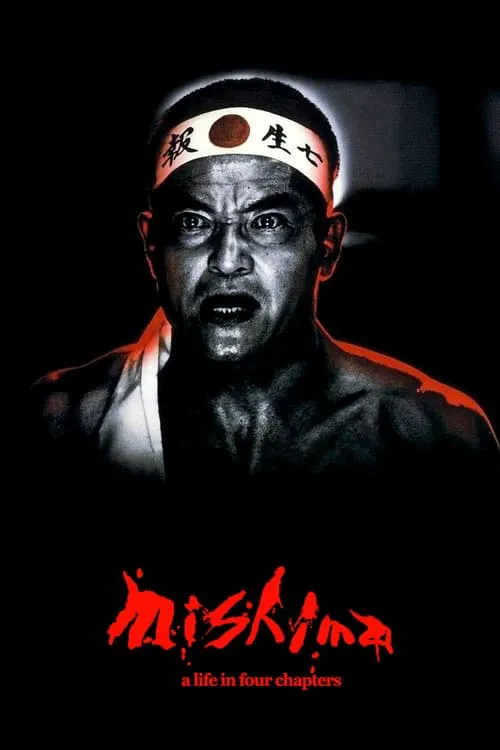Mishima: A Life in Four Chapters

Plot
Mishima: A Life in Four Chapters is a film that delves into the enigmatic and tumultuous life of Japanese author Yukio Mishima. The movie is a complex tapestry woven from the threads of fact and fiction, as it juxtaposes dramatizations of three of Mishima's novels - "The Temple of the Golden Pavilion", "Runaway Horses", and "Kyoko's House" - with a depiction of the events leading up to and including his shocking public ritualistic suicide on November 25, 1970. The film is composed of four chapters, each representing a distinct era and dimension of Mishima's existence. The first chapter, a dramatization of "The Temple of the Golden Pavilion", sets the tone for the rest of the film, presenting a meditation on the destructive nature of beauty, desire, and the transience of life. The story revolves around a young Buddhist acolyte, Mizoguchi, who becomes increasingly disillusioned with the imperfections of the real world and is driven to destroy the sacred Temple of the Golden Pavilion, symbolizing his own futile attempts at transcending human limitations. This initial chapter serves as an introduction to Mishima's existential concerns and his preoccupation with the concept of " mono no aware", a traditional Japanese sentiment that acknowledges and accepts the melancholy and impermanence of life. Through the story of Mizoguchi, the film illustrates Mishima's own inner turmoil and his growing disillusionment with modern society. The second chapter is a dramatization of the novel "Runaway Horses", which takes place in the early 1930s. This chapter is centered on the character of Isao Yagi, a young aristocrat struggling to maintain his values and sense of duty amidst the growing unrest of pre-war Japan. Yagi, embodying the traditional ideals of honor and loyalty, finds himself on a collision course with the modernizing forces of the country, as embodied by the radical left. This narrative thread exposes Mishima's critique of the country's transformation into a militaristic and nationalist state. The third chapter is a dramatization of the novel "Kyoko's House", published in 1965. This chapter is an exploration of the complexities of love and desire as experienced by a middle-aged artist, Noboru, caught in a complicated relationship with the beautiful and alluring young Kyoko. This narrative thread serves as a reflection of Mishima's own feelings of isolation and disconnection from the world around him. As the film progresses, the narrative shifts to the fourth and final chapter, which presents a non-fictional depiction of the events leading up to Mishima's final days. This chapter brings the story back to reality, as we witness the author's increasing frustration and sense of disillusionment with the changing Japan, culminating in the shocking act of seppuku he chooses to make a public statement against the country's growing secularism and materialism. In a dramatic and symbolic act, Mishima, accompanied by his loyal companion Masakazu Fujimori, performs a ritualistic beheading on the grounds of the National Guard headquarters in Tokyo. As he holds aloft a photograph of the Imperial Palace, Mishima proclaims his commitment to traditional Japanese values and his rejection of the values that he sees as corroding the nation's soul. This act of self-sacrifice, captured in stark, unflinching detail, serves as a poignant and haunting conclusion to the film, underscoring the complex, tortured, and enigmatic nature of the man behind the literary legend. Throughout the film, director Paul Schrader weaves together a complex tapestry of narratives that capture the essence of Mishima's life and legacy. The movie's use of non-linear narrative structure and the intermingling of fact and fiction creates a sense of disorientation, mirroring the confusion and disillusionment that characterized Mishima's final days. "Mishima: A Life in Four Chapters" is a cinematic meditation on the fragmented and often contradictory aspects of human existence, as exemplified in the enigmatic figure of Yukio Mishima. Ultimately, the film provides a multifaceted portrait of an intriguing and conflicted individual who left an indelible mark on Japanese literature. "Mishima: A Life in Four Chapters" stands as a testament to Schrader's ambitious vision and his willingness to explore the darkest recesses of the human experience, even if it means confronting the most difficult and disturbing aspects of his subject's final hours.
Reviews
Recommendations




